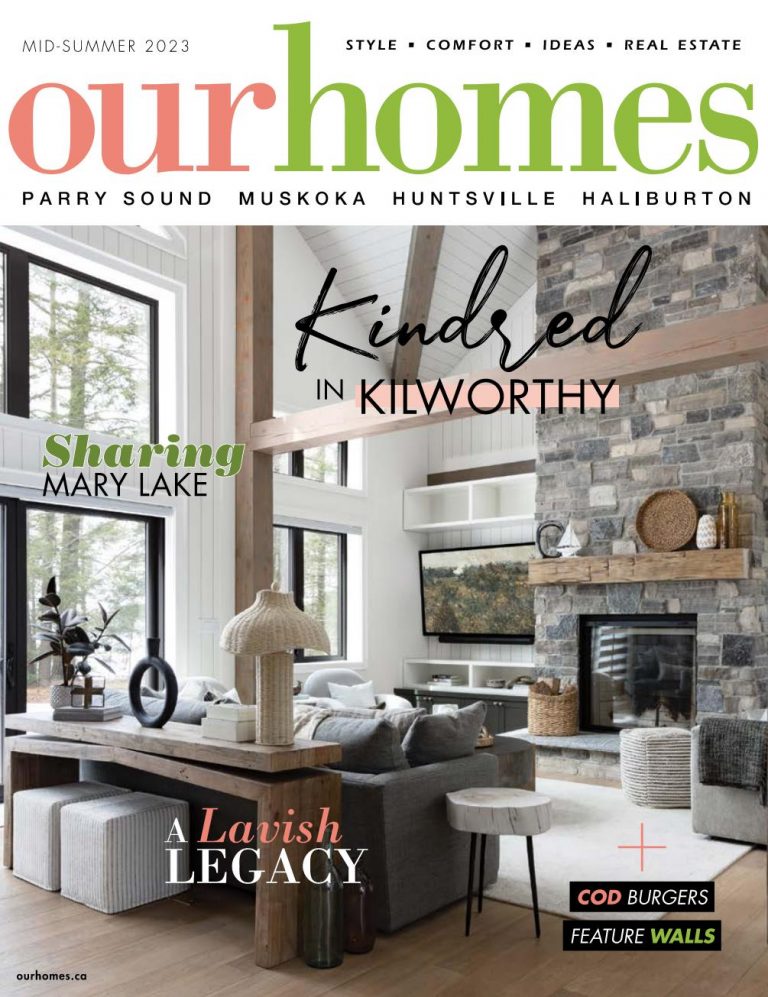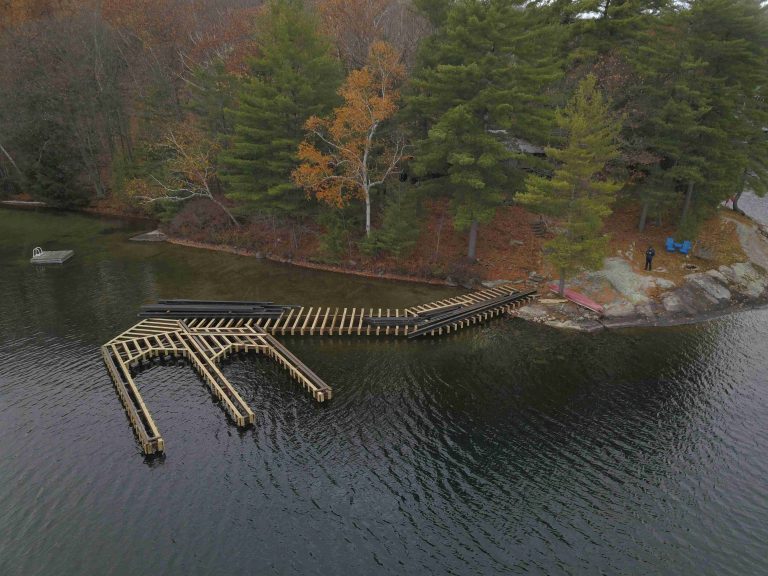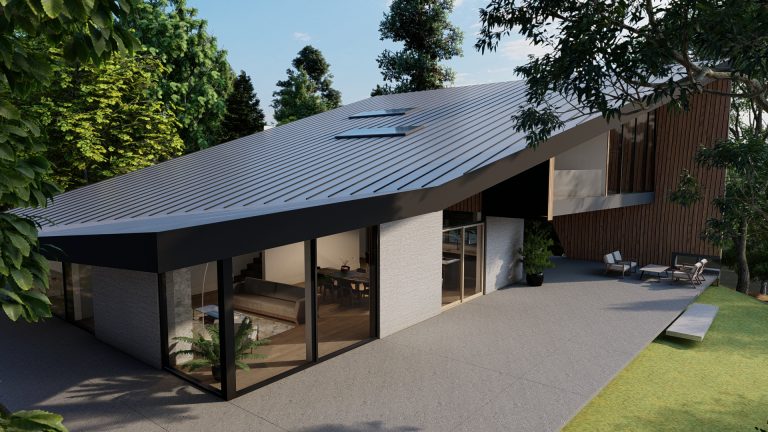Building with natural materials lowers a home’s carbon footprint and better situates it in the natural landscape
Sustainable cottages or vacation homes are becoming increasingly popular as more buyers become aware of the benefits of using sustainable features in the design process.
Designers are responding to this increased demand by incorporating a variety of sustainable features into vacation homes, from solar panels and greywater systems to rainwater harvesting and green roofs. And, thanks to advances in technology, these features are becoming more efficient and less expensive to implement.
What’s driving the demand for sustainable cottages?

Sourcing local materials with in your new cottages or vacation home build can also create a sense of place.
First and foremost, luxury home buyers are increasingly mindful of their impact on the environment. And this mind fulness translates into a desire for sustainable features in their homes.
A recent study by the National Association of Realtors found that the majority of home buyers, some 61%, were interested in sustainable features, and that number is only expected to grow.
More and more, buyers are opting for sustainable homes as a way to reduce their environmental impact.
The inhabitants of Planet Earth, as of August 22, 2021, overshot the Earth’s carrying capacity. On this day, human demand for natural resources officially outstripped what the planet is able to provide.
As our population continues to grow and consume more resources, it’s becoming increasingly important to find ways to conserve those resources. And sustainable vacation homes are one way to do that.
By incorporating sustainable features into vacation homes, we can reduce our reliance on finite resources like water and fossil fuels. And, as sustainable design and building practices become more advanced and less expensive, sustainable homes are becoming a more viable option for luxury home buyers.

Being purposeful within the design process to ensure the house will have a small ecological footprint is one of the most important aspects of eco friendly home design.
What features are being incorporated into sustainable house design?
Water
A precious resource, water is one of the most important features to consider when designing sustainable homes.
There are a number of ways to conserve water in vacation homes, from rainwater harvesting and greywater systems to low-flow fixtures and drought-tolerant landscaping.
Incorporating rainwater harvesting systems into eco friendly homes is a great way to reduce your reliance on municipal water sources. Rainwater harvesting systems collect and store rainfall, which can then be used for irrigation, cleaning, and even drinking water.
Another way to reduce water waste in eco friendly homes is to install greywater systems. Greywater systems recycle water from showers, baths, and sinks for use in toilets and landscaping. This helps to reduce the amount of water that is wasted each day.
Energy
Sustainable cottages or vacation homes are also designed to be energy-efficient. Solar power, solar water heaters, and wind turbines are just a few of the sustainable features that can be used to generate renewable energy. Understanding your home’s energy needs and designing a sustainable vacation home that meets those needs is one of the most important things you can do to reduce your impact on the environment.
Building materials
When it comes to eco friendly homes, sustainable materials are key. Sustainable materials are those that are eco-friendly, durable, and long-lasting. Popular sustainable materials include rammed earth, adobe, bamboo, wood and recycled and upcycled materials.
Rammed earth is a type of construction material made from natural soil that is compressed and formed into walls. Rammed earth is an eco friendly material because it is made from natural, sustainable materials and it is very durable.
Adobe is another type of eco friendly construction material. Adobe is made from mud, straw, and water, and it is often used in hot, dry climates.
Bamboo is a type of grass that quickly and doesn’t require much water or pesticides to grow. Bamboo is also strong and durable.
Wood can be sustainably sourced from certified forests that are managed in a way that protects the environment.
Recycled and repurposed materials are also popular in sustainable building. These materials are low impact because they are made from materials that would otherwise be waste.
Sustainable materials are not only good for the environment, but they also add a touch of luxury to home interiors. Bamboo floors, for example, are both beautiful and durable. And sustainable materials like wool and cork help add natural warmth and texture.

Living spaces within small ecofriendly homes should be designed to connect inhabitants to the outdoors
The benefit of sustainable cottage home design
More people are investing in holiday homes as a way to escape the hustle and bustle of everyday life and find a place to reconnect.
And when built sustainably, these vacation homes also come with a number of other benefits, such as improved indoor air quality, natural lighting, and better acoustics. And the research is showing more and more how important these factors are in our overall health and wellbeing.
Healthy home environment
Eco friendly homes are designed to provide a healthy and clean environment for their occupants. Features like airtight construction, natural ventilation, great mechanical systems, and energy-efficient appliances help to create a healthy indoor environment. Most of these components need to work together to make a healthy home.
A healthy home starts with air tightness, which is the most important part because we want the home to breath through the mechanical system. Not by bringing air through the dirty wall layers. Think of this like your car, why do car air conditioning and heating systems work so well, the answer is airtightness. We want to use that same philosophy in a home.
Our favorite strategy is by using Huber ZIP R Sheathing which is taped at the seams and sealed around windows using proper air tightness details.
The next part is to use a product called AeroBarrier to seal an small holes during the framing phase. This is done through pressurizing the home using a blower door and then spraying an aerosol to find all the small holes. We recommend this method because can often save a ton of time for the contractor to find those small holes on their own.
The mechanical or HVAC system of the house is the second most important thing beyond air tightness. The mechanical system is often low on the priority list for purchasing decisions but with an airtight home we want the mechanical system to be the lungs and should be carefully considered to make the home a healthier place. There is two main components for the conditioning and moving air in a home:
1. ERV (energy recovery ventilation) is used to bring in clean air while filtering out the stale interior air.
2. Mechanical systems itself which goes beyond ERV and is used to move and/or condition the air within the home.
These mechanical systems can come in different forms including traditional ducted furnace mechanical systems, high velocity air system (which uses smaller pipes), heat pump based system, and hydronic/radiant floor systems to move and condition the space. For all of these systems we recommend zoning as much as you can and there doesn’t need to be a lot of zones but splitting the living spaces and the bedrooms can be a great start to make your home feel more comfortable.
Materials like wood and wool help to filter out toxins and pollutants, while low VOC paint helps to keep your home free of harmful chemicals.
Being intentional with the building on the inside and out
Intentional living is a lifestyle that is characterized by being purposeful and deliberate in the way you live your life. Intentional living is about creating a life that is in alignment with your values and goals.
There are many different ways to live intentionally, but sustainably designed homes is a great place to start. When you build eco friendly, you are making a deliberate choice to reduce your impact on the environment.
Final thoughts
If you’re considering investing in a vacation home, sustainable features should be high on your list of priorities. Not only will sustainable features help to reduce your ecological footprint, but they can also add a touch of luxury to your home. Plus, this way of building is designed to stand the test of time, meaning you can enjoy your ecofriendly vacation home for years to come.
Corbin Patten Designs specializes in sustainable vacation homes. Based in the Muskoka / Georgian Bay area, we love designing unique and functional buildings that improve our clients’ quality-of-life and the community at large.
Founder Corbin Patten has a lifetime of expertise and understanding of the cottage and boathouse way of life, having grown up on Lake Rosseau. He understands what it takes to design eco friendly vacation homes that will stand the test of time and provide years of enjoyment for families and friends.
If you’re ready to start living intentionally and want to learn more about sustainable vacation homes, contact us today. We would love to help you build your dream sustainable getaway.



